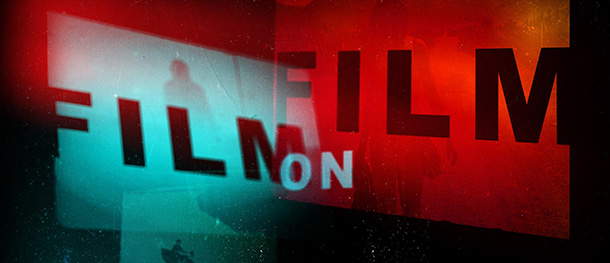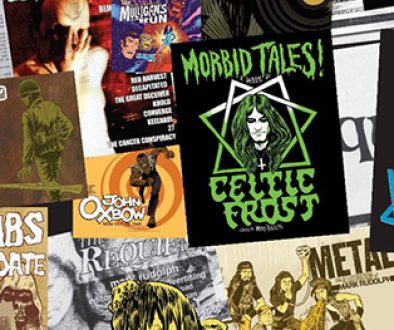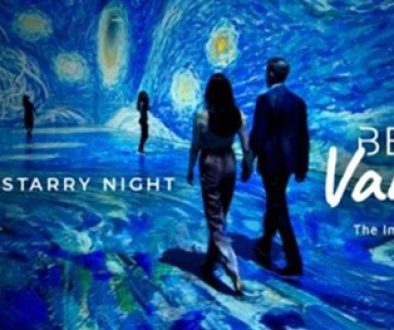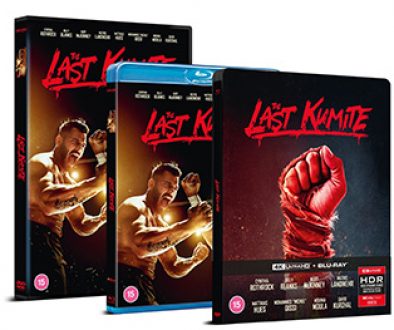BFI announce line-up for the inaugural BFI Film on Film Festival
The BFI today announce the programme for the inaugural edition of the BFI FILM ON FILM FESTIVAL, a brand new film festival taking place at BFI Southbank from 8-11 June 2023 and the first major film festival in the UK dedicated to screening works solely on celluloid. The BFI Film on Film Festival celebrates the physical materiality of film. Like the experience of listening to a great album on vinyl, part of the pleasure and meaning of watching film projected comes from its different look, sound and emotional impact. A whole generation of young filmgoers have grown up not seeing film projected on film, and this Festival is designed to deliver a unique, cinema-based experience that enables audiences to enjoy film in all its glory, exploring its aesthetics and celebrating the skills required to work with it.
Drawn almost exclusively from films preserved in the BFI National Archive, the Festival will highlight underseen titles and popular classics across a wide range of formats, including 16mm, 35mm, 70mm and Super 8, as well as rare nitrate prints and screenings of vintage dual-strip 3D productions, for which separate 35mm left and right-eye reels are projected simultaneously onto a special silver screen. In many cases, audiences will be watching decades old original release prints, providing a physically tangible and emotional connection to audiences from the past who watched the very same film print. There will also be a chance to hear from expert voices from the BFI’s world-leading conservation, curatorial and projection teams, who will lead a programme of 10 free events, talks and discussions throughout the long weekend. The Festival will include 39 features, 69 shorts, and 8 Television works, screening from 38 16mm prints, 58 35mm prints, 4 70mm prints and 16 Super 8 prints; the combined length of these prints is around 200,000 feet.
Festival highlights include screenings of four rare nitrate prints, the first UK screenings of highly flammable, but gloriously rich, nitrate prints in more than a decade, with BFI Southbank being the only cinema in the country equipped to screen nitrate. Among them is an original 1932 nitrate release print of Alexander Korda’s SERVICE FOR LADIES, at 91 years old the oldest film print ever projected to audiences in the UK; and our Opening Night film, an original release print of Michael Curtiz’s luminous masterpiece MILDRED PIERCE (1945). Audiences attending the Opening Night screening of MILDRED PIERCE will also be able to see the World Premiere of A DOG CALLED DISCORD (2023), a new short film from BAFTA-winning filmmaker Mark Jenkin, commissioned by the BFI especially to mark the Festival.
The Closing Night Film will be Steven Spielberg’s nerve-shredding blockbuster JAWS (1975), screening from a pristine original 1975 release Technicolor dye-transfer print. The Festival ends with a Closing Night Party featuring two vinyl-only DJ sets from Dom Rafferty (City Wall Radio) and Friendly Vinyl Club, who will be spinning sounds from the 70s, from big summertime anthems to more eclectic bangers.
The BFI Film on Film Festival is made possible thanks to funding from the National Lottery and generous support from The Thompson Family Charitable Trust and Simon and Harley Hessel, with additional support from The Charles Skey Charitable Trust anddonors to the Keep Film on Film campaign.
Robin Baker, BFI Film on Film Festival Programme Director and Head Curator, BFI National Archive said, “Around 20 years ago film experienced a revolution. Cinemas and filmmaking went digital and it changed how we saw and experienced film in cinemas. Film and digital look and sound different, and although one’s not necessarily better or worse than the other, digital can’t recreate the specific qualities of a projected print. Physical film prints feel richer, softer, more nuanced, more mercurial. Each time a print is projected it changes subtly. Like ourselves, it will age and change, carrying its story with it, while a Digital Cinema Package (DCP) will look absolutely identical each time. Most films made during the first 110 years of filmmaking still haven’t been digitised, so if you can’t show them on film, you can’t see them. There’s a huge appetite to experience film prints projected, especially from younger audiences whose film-going started after the arrival of digital projection and with this Festival we hope to continue keeping that experience alive.”
While the majority of films are now shot and shown digitally, some contemporary filmmakers like Christopher Nolan (TENET), Mark Jenkin (ENYS MEN) or Greta Gerwig (LITTLE WOMEN) make the decision to shoot on film.
In a recent filmed interview on AlterCine, Christopher Nolan said, “When film is projected, the way it was originally intended to be seen, the way you shot the film, it’s a very unique experience for the audience that they can’t get in their living room…I think there is a very real danger that with watering down the theatrical experience, it waters down the experience of what a film is, that organic larger-than-life quality a film print has.”
Filmmaker Mark Jenkin said, “For me it’s not just a decision motivated by aesthetics. Film is undoubtedly beautiful, abstract, even magical, but my choice to shoot exclusively on film is also about the technical simplicity of the equipment, the limitations of the format, and the discipline it instils at every stage of production”
With film digitisation being hugely expensive, only a fraction of the world’s film heritage has been digitised to date. Far too many great films are locked away and impossible to see – unless they are projected on film. The Festival will offer discoveries, rare prints and exciting surprises for audiences, screening on film prints drawn from the BFI National Archive. Rarities on offer will include Argentinian classic, THE HOUSE OF THE ANGEL (Leopoldo Torre Nilsson, 1957), a gothic brew of Tennessee Williams, Jean Cocteau and Orson Welles that begs to be rediscovered; Mrinal Sen’s unflinching yet lyrical portrait of a Calcutta family in crisis, AND QUIET ROLLS THE DAWN (1979); and ASH WEDNESDAY (Larry Peerce, 1973), a diamond and fur-strewn melodrama long unavailable in the UK, in which a dazzling Elizabeth Taylor ages in reverse. Due to print shrinkage, it is likely that the Festival will be the last time the archive’s Technicolor dye-transfer print of Frank Perry’s THE SWIMMER (1968) will ever be screened again. A majestic performance from Burt Lancaster sits astride this cult story of a man swimming home through the backyard pools of the Connecticut suburbs. Also screening will be Coky Giedroyc’s debut feature STELLA DOES TRICKS (1996), which is dominated by Kelly Macdonald’s powerful portrayal of a teenager caught in a cycle of abuse; Jan Schütte’s subtly observed DRAGON’S FOOD (1987), a tragically relevant tale of two asylum seekers attempting to build new lives in West Germany; and Idrissa Ouédraogo masterpiece of West African cinema,TILAÏ (1989), a beautiful, poetic, fable-like tale of a forbidden love affair that challenges tradition and the law, showing on a spotless, barely-ever-screened original print.
SPECIAL PRESENTATIONS in the Festival will include Charlie Shackleton’s THE AFTERLIGHT (2021), which weaves together ghostly fragments from film history, showing actors from different eras and countries who all have one thing in common: they’re now dead. Reflecting the inevitable decay that comes to all things, Shackleton’s film, which received its world premiere at the BFI London Film Festival, has been designed to slowly deteriorate, for the only existing copy is a 35mm print that has travelled around the world, accumulating wear and tear and changing irrevocably with every projection. The Festival also celebrates the beauty and versatility of Super 8 film with a SPECIAL PRESENTATION from Straight 8, including work by Edgar Wright, Alice Lowe and more. Straight 8 has done much to preserve interest in the glorious aesthetic of 8mm film. From small beginnings it’s now a global competition that challenges filmmakers to shoot a mini masterpiece on a single roll, edit it in camera, with retakes and post-production strictly forbidden. The Festival will be showing 16 of the best titles from the last two decades, eight of which will be projected from the original piece of film that whirred through the filmmakers’ cameras. But this will be the original prints’ final outing: straight after the screening they will join the BFI National Archive to ensure they’re preserved for posterity.
With its superior clarity of image and sound, the 70mm format is designed for spectacle and made to be seen on the big screen, so it is only fitting that the Festival will host Christopher Nolan’s THE DARK KNIGHT TRILOGY ALL-NIGHTER at the biggest screen in the UK, BFI IMAX, on 10 June, part of the cinema’s COUNTDOWN TO OPPENHEIMER mini-season and featuring 70mm screenings of key films from Nolan’s career. Tom Cruise and Nicole Kidman’s star power and romantic chemistry shine in Ron Howard’s unapologetically sentimental Irish immigration epic, FAR AND AWAY (1992), screening on a pristine 70mm print. The first feature to be shot on Panavision Super 70mm, it was also the last 70mm Hollywood production until Paul Thomas Anderson’s THE MASTER in 2012. This archive 70mm print is absolutely spotless and looks incredible on BFI Southbank’s NFT1 screen.
Funding from the National Lottery and the additional support of donors to the BFI’s Keep Film on Film campaign has enabled the BFI to invest in the creation of a 100 new 35mm projection prints of film titles curated and sourced from classics of British and International cinema. The first of these new prints will premiere at the Festival including MALCOLM X (Spike Lee, 1992), IN THE MOOD FOR LOVE (Wong Kar Wai, 2000), MORVERN CALLAR (Lynne Ramsay, 2002), LOSING GROUND (Kathleen Collins, 1982), REBEL WITHOUT A CAUSE (Nicholas Ray, 1955), WORKING GIRLS (Dorothy Arzner, 1931), MY BRILLIANT CAREER (Gillian Armstrong, 1979) and ALL ABOUT MY MOTHER (Pedro Almodóvar, 1999).
The Festival will feature a selection of vintage dual-strip 3D productions, for which separate 35mm left and right-eye reels are projected simultaneously onto a special silver screen. The visual language of Alfred Hitchcock gets a whole new dimension to play with in the director’s lone venture into stereoscopic filmmaking, DIAL M FOR MURDER (1954). The film was almost exclusively distributed ‘flat’ on its original release, and this rare opportunity to see the 3D version projected on film offers a revelatory experience. There will also be a rare chance to see John Wayne perform against a backdrop of breathtaking scenery and amidst an array of flying arrows in widescreen 3D Western HONDO (John Farrow, 1953), and classic 3D horror thriller HOUSE OF WAX (André De Toth, 1953) starring Vincent Price as a sculptor who attracts art critics to a wax museum to witness his refined historical tableaux, but is under pressure to cater to more sensational tastes. Animation, sport and ballet feature in NOW IS THE TIME TO PUT ON YOUR GLASSES: 3D TELEKINEMA SHORTS, a selection of 3D shorts, some of which were specially commissioned as part of BFI’s contribution to the 1951 Festival of Britain, that were shown in its first dedicated film theatre, the Telekinema. Some 70 years on, this screening will use the very same prints.
2023 marks the centenary of the arrival of 16mm, and the Festival will celebrate the format that democratised film. 16mm cameras and stock were far cheaper and far lighter than 35mm and changed how films could be made – and who could make them – and bringing with it a host of new voices. Relatively lightweight 16mm projectors also meant that film projection was not restricted to cinemas, but could be set up in schools, village halls, workplaces and even people’s homes. To mark the centenary we’re converting the Blue Room into a 16mm screening room where, for 3 days, audiences will get to sit alongside the projectors and projectionists.
One of the areas of filmmaking that 16mm enabled was an explosion of creativity from artist filmmakers, and the programme includes a day-long celebration of artists’ film. When director John Schlesinger donated his personal archive to the BFI he included 16mm films and projections created for the psychedelic Warhol-style ‘happening’ party scene in MIDNIGHT COWBOY (1969). For the first time ever, these original prints will be projected to a public audience in a unique, expansive one-off multi-projection sound and vision ‘happening’, accompanied live by dark ambient noise quartet, The Begotten, alongside underground avant-garde films by Maya Deren and Scott Bartlett.
Taking film out of a traditional auditorium, the festival pushes the boundaries of projection with a programme of Expanded Cinema, where images are screened from multiple projectors including experimental works by artist filmmakers Chris Welsby, Malcolm Le Grice and more. There’s a programme of fantastical works by LGBTQ+ filmmakers including Andrew Meyer’s super-rare AN EARLY CLUE TO THE NEW DIRECTION (1967), recently rediscovered in the USA, alongside works by queer forebears and underground visionaries Kenneth Anger, Lloyd Reckord and Sandra Lahire.
Produced by Ceddo Film & Video, one of the UK’s influential Black and Asian Film Workshop collectives of the 1980s and 1990s, OMEGA RISING (1988) is the first documentary by a female Rastafarian filmmaker. The late D. Elmina Davis’s film is a vibrant artistic, spiritual and Political portrait of the Rastafari faith. The Festival also explores the ways in which 16mm enabled films to be taken to different audiences. There are programmes celebrating the joys of projection itself and the world of the workplace training film. Film societies flourished across the UK in non-cinema venues with the arrival of 16mm, and the festival recreates a night at a British film society in the early 1950s with a line-up that ranges from a silhouette animation by Lotte Reiniger to a charity film by Lindsay Anderson.
There will also be a day of 16mm prints of rare television gems that have survived on film, including a programme of children’s TV classics such as SOOTY (1963), PLAY SCHOOL (1968), DO NOT ADJUST YOUR SET (1968) and HENRY’S CAT (1986). Plus a screening of DOCTOR WHO: SPEARHEAD FROM SPACE (1970), John Pertwee’s first outing as The Doctor, and the only series of DOCTOR WHO to be shot and edited on film, and Ken Russell’s CLOUDS OF GLORY (1978), comprising two films about the lives of the Lake Poets, Wordsworth and Coleridge.
The Festival will also mark the centenary of two documentary filmmakers with dedicated programmes of short films. Prolific documentary maker Sarah Erulkar was the first global majority filmmaker to have a career as a film director in the UK. Indian-born and Jewish, Erulkar began her career at the prestigious Shell Film Unit. Her early film LORD SIVA DANCED, a portrait of dancer Ram Gopal, was a huge hit in India. However, despite her success, she was expected to resign upon marriage. Erulkar resisted, remaining determined to be a filmmaker. She worked freelance for the rest of her 40-year career, directing an incredible array of films including the selection of films being shown in the Festival: LORD SIVA DANCED (1948), SOMETHING NICE TO EAT (1967), PICTURE TO POST (1969) and THE AIR MY ENEMY (1971). During John Krish’s career, he was respected in his corner of the industry but little-known outside of it, waiting until long after retirement for the recognition he deserved. But Krish is now acknowledged as a major figure in Britain’s documentary tradition; the Festival will screen four unforgettable shorts that exemplify his versatility, skill and humanity: THEY TOOK US TO THE SEA (1961), THE FINISHING LINE (1977), I STOPPED, I LOOKED AND I LISTENED (1975) and I THINK THEY CALL HIM JOHN (1964).
The Festival will host a special FAMILY screening of the spellbinding Disney classic THE SWORD IN THE STONE (Wolfgang Reitherman, Clyde Geronimi, 1963). Archimedes the owl, the eccentric Merlin and the delightfully dangerous witch Madam Mim bring comedy, chaos and peril in equal measure, while the Sherman Brothers’ songs began a path to subsequent successful collaborations on MARY POPPINS and more. There will also be a drop-in workshop for children before the screening, where they can throw themselves into the world of animation techniques by creating flipbooks, operating a Steenbeck and playing with a praxinoscope.
Expert voices from the BFI’s world-leading curatorial, conservation and projection teams will lead a vibrant programme of free events, talks and discussions throughout the Festival weekend, including an interactive event where audiences will be able to hold and view celluloid up close, a talk looking at the differences between film and digital, an event that demystifies how a print makes it from the BFI National Archive to a cinema screen, a talk about the detective work that follows opening the lid on an unknown can of early film, and much more.
The BFI Film on Film Festival is made possible thanks to funding from the National Lottery and generous support from The Thompson Family Charitable Trust and Simon and Harley Hessel, with additional support from The Charles Skey Charitable Trust and donors to the Keep Film on Film campaign.
The new 35mm prints created for the BFI National Archive are made possible by working with a global network of expert photochemical laboratories. Laboratories who’ve struck prints within the programme include: L’Immagine Ritrovata, Haghe Fillm, YCM, FotoKem, Colorlab, Hiventy, Titrafilm and ANIM, Cinemateca Portuguesa.
Tickets for the Festival are on sale from the following times and dates:
BFI Patrons – Tuesday 2 May, 09:30
BFI Champions – Tuesday 2 May, 12:30
BFI Members – Wednesday 3 May, 11:30
General sale – Friday 5 May, 11:30
As well as individual tickets, Festival Passes (for 14 screenings) and Discovery Passes (for 8 screenings) are also available. Audiences aged 25 and Under can buy £5 tickets via the BFI’s ticket scheme for young audiences.
For audiences with access requirements, the Festival will feature a number of accessible screenings. These will include on screen subtitling (including descriptions of non-dialogue audio) for TILAÏ, DRAGON’S FOOD, WORKING GIRLS, THE SWORD IN THE STONE and MY BRILLIANT CAREER; audio described screenings of IN THE MOOD FOR LOVE; BSL interpreted screenings of SAM’S BOY, THE BOATSWAIN’S MATE and THE FIRST BORN; and, for those in the neurodiverse community, a Relaxed Screening ofCHILDREN’S TELEVISION CLASSICS. Full details can be found on the Festival’s website.







